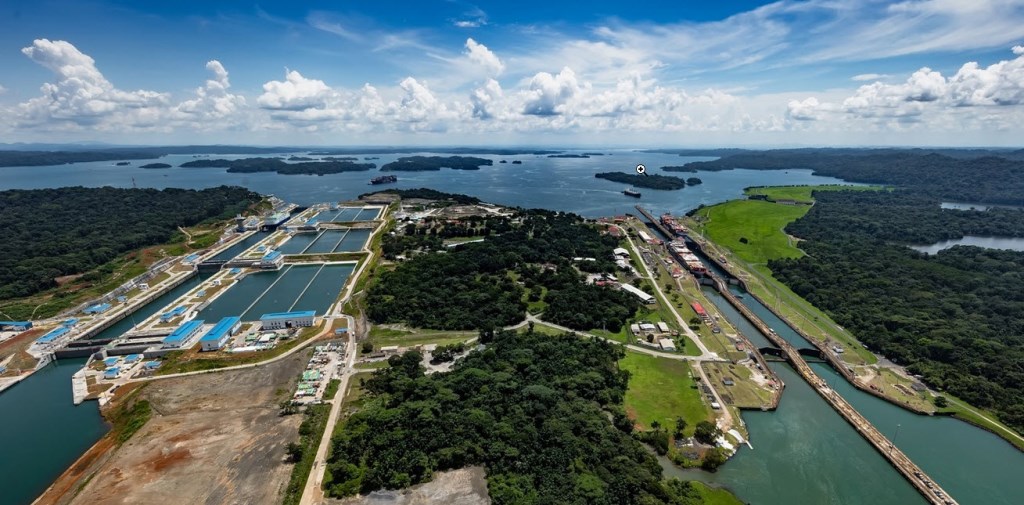More than a century ago, the opening of the Panama Canal revolutionized international trade by making it much quicker and easier to travel between the Atlantic and Pacific Oceans. But, write Stephan Maurer and Ferdinand Rauch, the canal’s opening also had a significant impact on the economic geography of the US. By examining county level data from 1900 to 2000, they find that those places that enjoyed better market access because of the canal also saw greater population growth, higher manufacturing wages and increased out of state immigration.
In the early 20th century a ship travelling from San Francisco to New York or on to Europe first had to travel over 13,000 miles around the entirety of South America. That all changed in August of 1914 with the opening of the Panama Canal, bridging the Atlantic and Pacific Oceans. And while the new canal cut the distance which needed to be travelled to just over 5,000 miles, it also had huge effects on the United States itself in the years which followed.
Having easy access to a large number of trading partners is an important determinant of where economic activity is located. For example, pioneering research has shown how the division of Germany after World War II reduced the market access of West German cities along the new border with East Germany. These cities lost part of their previous economic hinterland in East Germany, and were left with fewer trading opportunities compared to other West German cities. As a consequence, border cities grew more slowly than comparable cities elsewhere in West Germany during the time of division.
The effect of changes in market access on how attractive a place is to locate more economic activity is an old question in the literature. It is also of practical importance to policy makers who consider investing in transportation infrastructure. Typically, this question is addressed by case studies that consider the effects of railroads, highways, ports and other changes in transport infrastructure. For example, a 2016 study examined the impact of the expansion of railroads in the United States between 1870 and 1890 on agriculture. It found that the value of agricultural land doubled due to the presence of the railroad network. Several other contributions have looked at the impact of roads or air links.
In recent research, we study how the opening of the Panama Canal in 1914 influenced the economic geography of the United States. The opening of the canal was one of the largest changes to international shipping distances, leading to big changes in market access for every US county, with big variations in the degree of this change across the US. The opening took place at a time when international trade overwhelmingly took place by ship, which makes this change in distances a more precise measure of trade than it would be in later decades.
In our work, we built a dataset of international and domestic market access for US counties for 1890 and used it to measure the change in market access caused by the Panama Canal for each US county. Figure 1 below shows the United States, removing variation due to basic geographic patterns. Here, the lighter or brighter areas are those that benefitted more from market access due to the Panama Canal. The map does not show market access levels overall, which we conditioned out, but only market access change induced by the Panama Canal.
Using this data, we are able to show that there was a strong positive causal effect of market access change on population growth throughout the 20th century – with no difference between small and large counties. We find that an increase in market access of one percent leads to a population that is around six percent larger by 1940. We also provide related numbers for manufacturing wages, agricultural land prices and immigration from out of state, and show that all these react positively to increased market access. This effect seems to be fairly similar for workers in export-related industries and in those that service local markets, with export-industry workers reacting faster initially, and services catching up a little slower. Workers in agriculture react only by little. We also use economic theory to provide a cost-benefit analysis of the Panama Canal as an investment for the United States. Our numbers suggest that the benefits from the canal easily outweigh its cost.
Looking at results over time we find that the canal had no effect on population growth of counties in the “Placebo” period (1880-1900) before it opened. It had a significant positive effect in all the 20-year intervals after, particularly from 1900-1920. After that we continue to observe a positive effect that declines consistently over time. This continued positive effect on growth reflects that the existence of the canal becomes more valuable over time as globalization and trade intensified.
